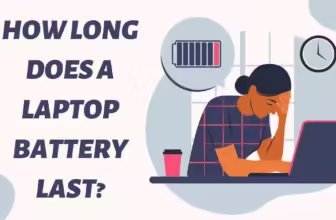The year is 2024, and the home office isn’t going anywhere. Yet, as anyone who’s battled a lagging laptop knows, remote work demands more than just any machine; it requires a purpose-built machine.
Consider this:
So, how do you decode the spec sheet and pinpoint the ideal WFH powerhouse? Let’s dissect the essentials.
APPLE’S M3 MACBOOK PRO: A FRUSTRATINGLY AWESOME PARADOX
Apple, in their infinite wisdom, has once again delivered a laptop that’s both a marvel of engineering and a source of mild irritation.
The 2023 14-inch MacBook Pro, armed with the M3 chip, is undoubtedly a beast, but it’s not without its quirks.
M3 CHIP: POWERHOUSE OR OVERKILL?
This 8-core CPU and 10-core GPU combo is an undeniable powerhouse. It chews through video editing, 3D rendering, and even some gaming like a hot knife through butter.
But for most of us mere mortals, who spend our days in spreadsheets and word processors, is all this power truly necessary?

I mean, sure, it’s nice to have a laptop that can handle anything you throw at it, but at what cost? The price tag is enough to make your eyes water.
And with that sleek, minimalist design, you’re practically begging for a dongle disaster.
LIQUID RETINA XDR: EYE CANDY WITH A CATCH
The 14.2-inch Liquid Retina XDR display is undeniably gorgeous. Colors pop, blacks are inky deep, and the brightness is enough to blind a mole.
But if you’re not a professional photographer or video editor, will you truly appreciate the difference?
Plus, that glossy finish is a fingerprint magnet. Get ready to carry a microfiber cloth everywhere you go.
8GB UNIFIED MEMORY AND 512GB SSD: THE BARE MINIMUM?
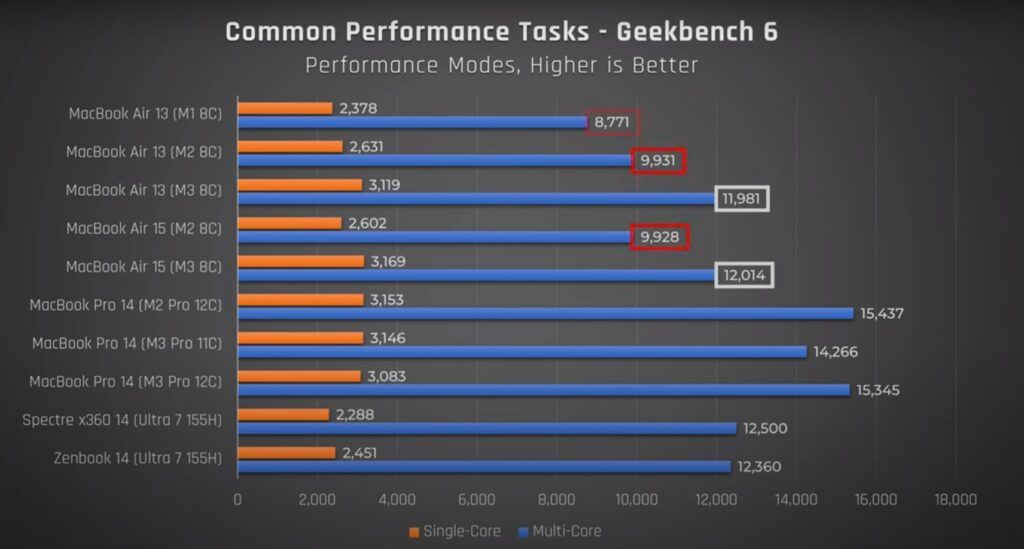
Apple, why do you insist on giving us the bare minimum? 8GB of unified memory might be enough for light users, but power users will quickly hit the ceiling.
And 512GB of storage? In 2023? That’s barely enough for a decent photo library, let alone a professional’s workload. While 512GB of storage is decent, it may not provide ample storage space for all your work files and applications, especially for remote work.
Sure, you can upgrade, but be prepared to shell out an exorbitant amount of cash.
THE APPLE ECOSYSTEM: A GOLDEN CAGE?
I can’t deny the allure of the Apple ecosystem. Handoff, Universal Clipboard, AirDrop – it’s a seamless experience.
But it’s also a closed ecosystem. Want to use a different browser? Tough luck. Prefer Windows? Forget about it.
Apple’s walled garden is undeniably convenient, but it also feels a bit restrictive. Additionally, the limited port selection can be a hassle if you need to connect multiple peripherals for a more ergonomic and productive workstation.
A LOVE-HATE RELATIONSHIP
The 2023 MacBook Pro is a testament to Apple’s engineering prowess. It’s a beautiful, powerful machine that will undoubtedly satisfy the needs of many users.
But it’s also expensive, arguably overkill for most, and locked into Apple’s ecosystem.
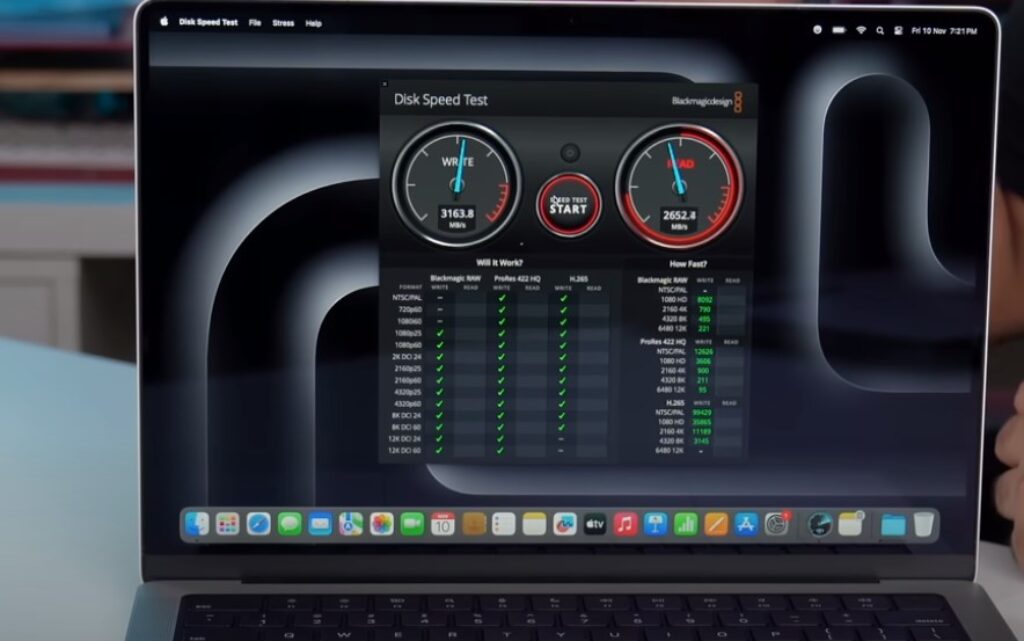
So, should you buy it? That depends. If you’re a die-hard Apple fan with deep pockets and a need for serious power, then yes, absolutely.
But if you’re a more budget-conscious user who values flexibility and choice, then you might want to look elsewhere.
Apple, you’ve created a frustratingly awesome laptop. I can’t help but love it, even as I curse its limitations.
LENOVO YOGA 7I: A WORK-FROM-HOME PARADOX WRAPPED IN A 2-IN-1 CHASSIS

Lenovo’s Yoga 7i (82YN0002US): a sleek, Storm Grey 2-in-1 that whispers promises of productivity and versatility.
It’s a laptop that desperately wants to be your all-in-one WFH companion. But does it deliver?
INTEL CORE I7-1355U: A POWERHOUSE… BUT IS IT OVERKILL FOR ZOOM CALLS?
Let’s be frank. This 13th Gen Intel Core i7 processor is a beast, capable of handling demanding tasks such as video editing and coding marathons.
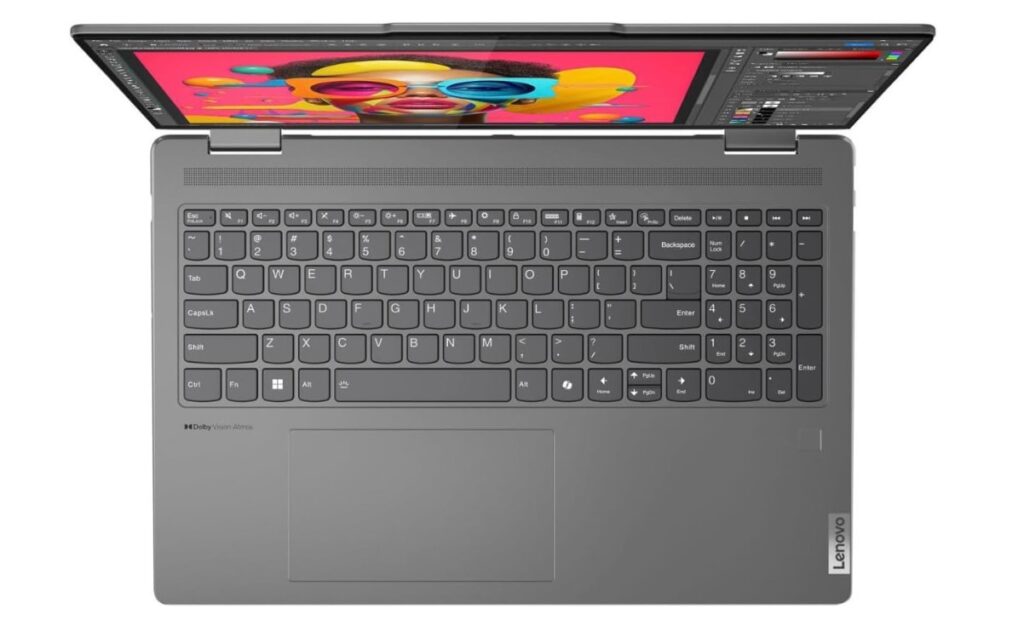
But, for most WFH warriors, that power might be a bit… excessive.
I mean, sure, it’s nice to have a laptop that can render 8K videos in your downtime. But for the daily grind of emails, spreadsheets, and endless Zoom meetings, do you really need that much muscle?
16-INCH WUXGA TOUCHSCREEN: A BLESSING AND A CURSE FOR PRODUCTIVITY
This display is a sight to behold. 16 inches of vibrant WUXGA resolution is a dream for spreadsheets, presentations, and even the occasional Netflix binge.
The touchscreen is responsive and accurate, perfect for navigating Windows 11’s touch-friendly interface.
But here’s the kicker: that glossy finish is a fingerprint magnet. Get ready to wipe it down every five minutes.
And while the 2-in-1 form factor is convenient for tablet mode, it also adds unnecessary bulk and weight for a laptop you’ll primarily use on a desk.
16GB MEMORY AND 512GB SSD: A SOLID FOUNDATION… FOR NOW
Lenovo gets points for finally giving us a decent amount of RAM and storage. 16GB is enough for smooth multitasking, and the 512GB SSD offers ample storage space for your work files and apps.
But let’s not get carried away. This is the bare minimum we should expect from a premium laptop in 2024. In a couple of years, you might find yourself craving more storage or memory.
THE VERDICT: A COMPROMISED COMPROMISE
The Lenovo Yoga 7i is a capable machine, no doubt. But it’s a laptop that’s trying to be too many things at once.
It’s a powerful workstation, a multimedia powerhouse, and a tablet, all wrapped into one.
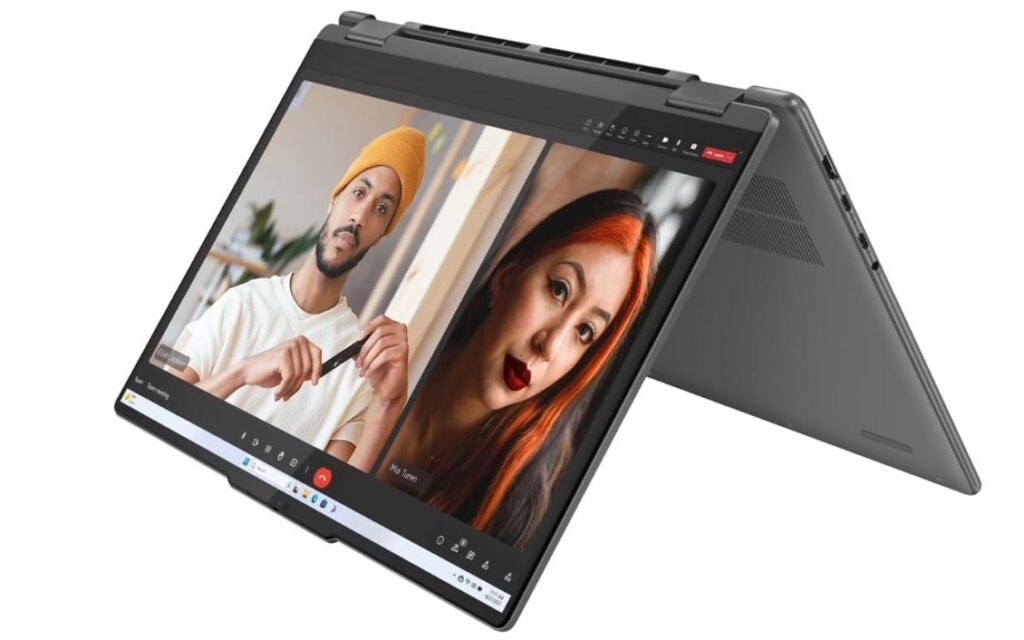
This jack-of-all-trades approach inevitably leads to compromises.
The powerful processor might be overkill for WFH tasks, the touchscreen is prone to smudges, and the form factor might not be ideal for everyone.
Who Should Buy It?
If you’re a remote worker who needs a versatile machine that can handle a wide range of tasks, the Yoga 7i is worth considering.
But if you’re primarily focused on productivity and don’t need the tablet functionality, there might be better options out there.
Lenovo, you’ve created a decent laptop, but it’s not the perfect WFH machine. It’s a compromise, and it’s up to you to decide if it’s the right one for you.
ASUS VIVOBOOK 16: A WORK-FROM-HOME COMPROMISE?
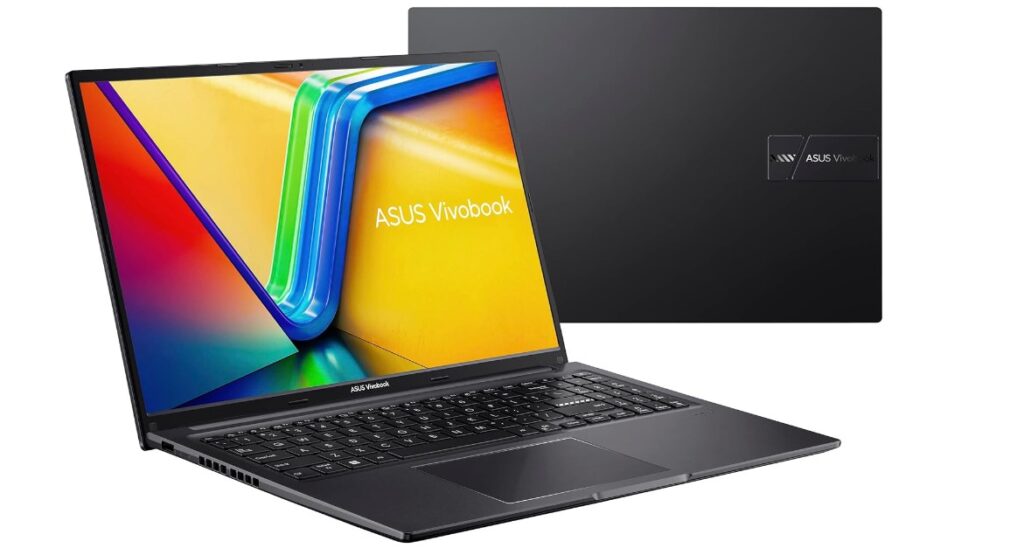
Asus is back in the game with the Vivobook 16, a dark horse contender in the remote work arena. It flaunts a spacious display, a capable processor, and a wallet-friendly price tag.
But is it the work-from-home warrior you’ve been dreaming of, or is it just another middle-of-the-road laptop masquerading as a productivity powerhouse?
AMD Ryzen 7 7730U: A Decent Workday Engine, But Don’t Expect a Ferrari
The Ryzen 7 7730U isn’t going to win any drag races against Intel’s i9 or Apple’s M3 chips.
But for the average telecommuter, who spends their days buried in spreadsheets, emails, and video calls, this processor is more than capable. Additionally, the laptop’s port selection makes it easy to connect an external monitor for an enhanced productivity setup.
Spreadsheets load in a flash, web browsing is smooth as butter, and even multitasking between multiple apps is a breeze.
It won’t handle heavy video editing or 3D rendering, but let’s be honest, how many remote workers are doing that on a daily basis?
16-inch WUXGA Display: Your New Digital Workspace… With a Side of Smudges

The 16-inch WUXGA display is a productivity dream. That extra vertical real estate is a godsend for coding, writing, and even just browsing the web.
Colors are accurate, text is crisp, and the anti-glare coating is a welcome addition for those bright, sunny workdays at home.
But, as with any touchscreen, it’s a fingerprint magnet. Keep that microfiber cloth handy, folks. And while the 16:10 aspect ratio is great for work, it might not be the best choice for watching movies or playing games.
8GB RAM and 1TB SSD: The Good, the Bad, and the Ugly
Let’s start with the good: 1TB of SSD storage is fantastic. You’ll have plenty of space for all your work files, documents, and even a few cat videos. But 8GB of RAM? In 2024? That’s a head-scratcher.
Sure, it’s enough for basic tasks, but if you’re planning on doing any serious multitasking or running memory-intensive applications, you’ll quickly hit the wall.
Upgrading the RAM is always an option, but it’s an added expense you shouldn’t have to worry about.
Fingerprint Sensor and Windows 11 Home: Convenience and Bloatware, the Odd Couple
The fingerprint sensor is a nice touch for security-conscious remote workers. It’s fast, reliable, and a convenient way to log in to your laptop without typing a password.
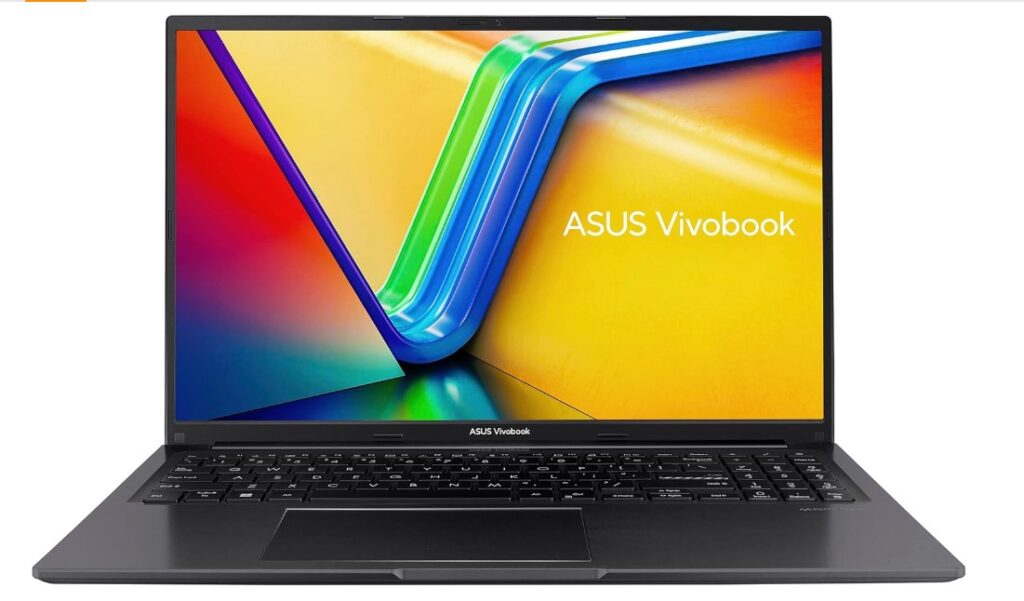
But Windows 11 Home? That’s a different story. Get ready to deal with a mountain of bloatware and annoying notifications.
Do yourself a favor and uninstall all the unnecessary junk before you even start working.
The Verdict: A Decent WFH Laptop, But Not Without Its Quirks
The Asus Vivobook 16 is a mixed bag. It’s got a lot going for it: a decent processor, a spacious display, and a generous amount of storage.
But it’s held back by its limited RAM, fingerprint-prone touchscreen, and the usual Windows bloatware.
If you’re a remote worker who primarily uses productivity apps, doesn’t mind wiping down your screen every few minutes, and can tolerate a bit of bloatware, then the Vivobook 16 might be a good fit for you.
But if you’re a power user or someone who demands the absolute best, you might want to look elsewhere.
Asus, you’ve got a decent laptop on your hands, but don’t rest on your laurels. Address those shortcomings, and you could have a real work-from-home winner.
LENOVO IDEAPAD SLIM 3 CHROME: A CHROMEBOOK FOR THE BARE NECESSITIES
Lenovo’s tossed another Chromebook into the ring, the IdeaPad Slim 3 Chrome 14IAN8. It’s sleek, it’s gray, and it screams “budget-friendly” among remote work laptops.
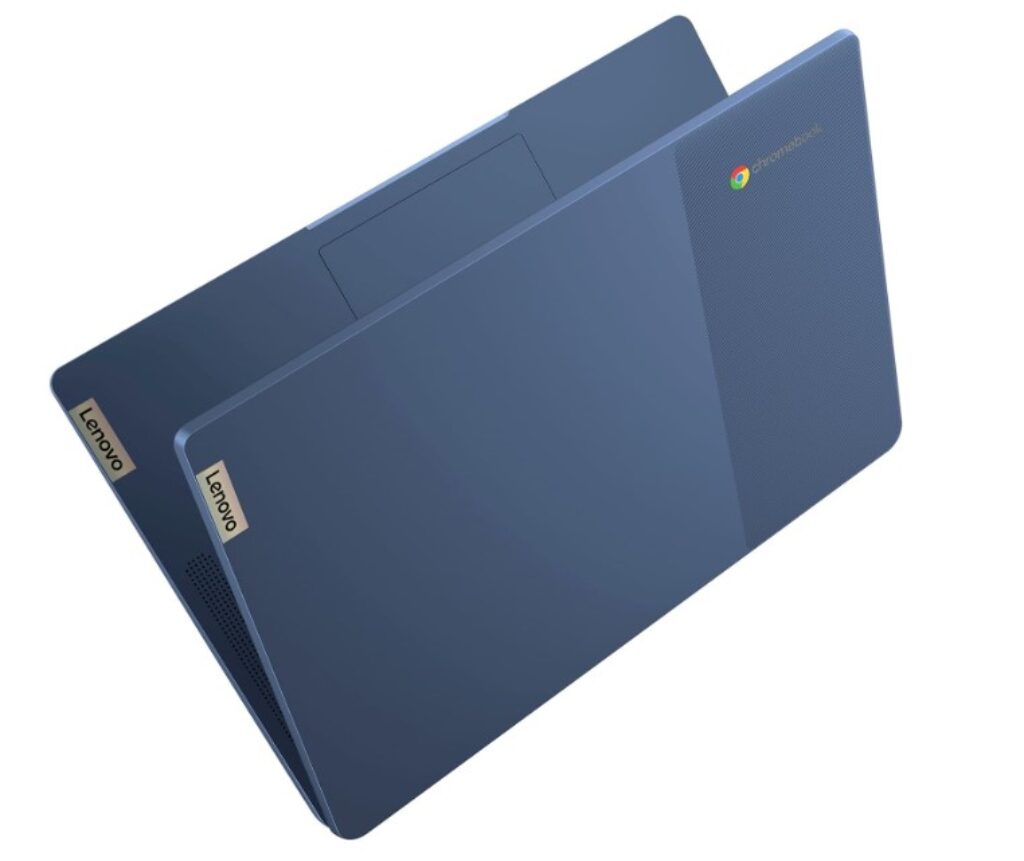
But is it a work-from-home hero, or just another cheap laptop with a Chrome logo slapped on it?
Intel N-Series N100 Quad-Core Processor: The Bare Minimum for Barely Getting By
Let’s be blunt. This isn’t a powerhouse. The Intel N-Series N100 is a low-power chip designed for basic tasks like web browsing, email, and document editing.
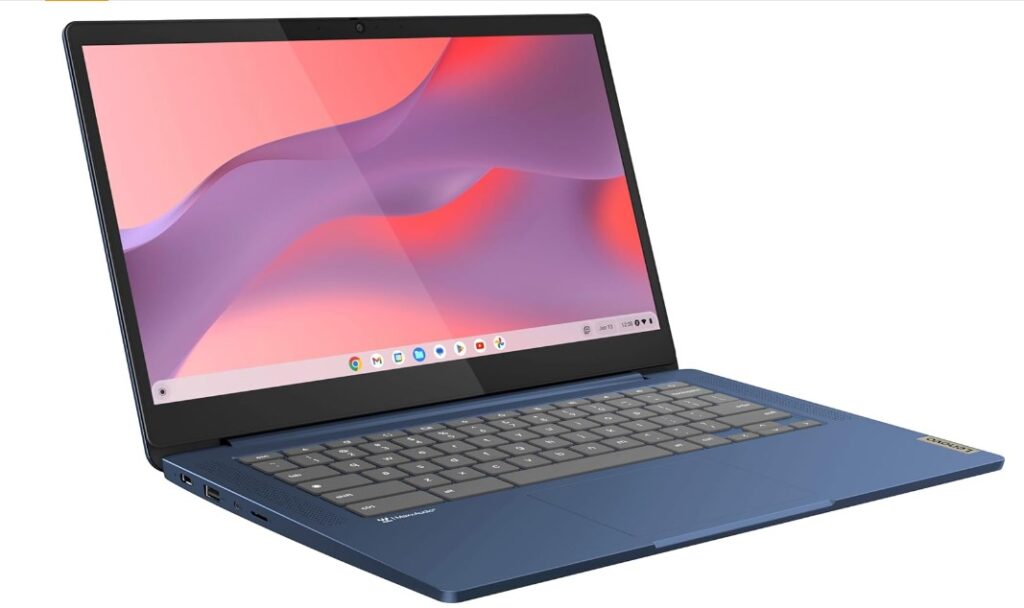
If your workday consists of endless Google Docs and Zoom calls, it’ll get the job done. But don’t expect to edit videos, run demanding applications, or even have too many Chrome tabs open without things getting sluggish.
Seriously, Lenovo, couldn’t you have squeezed in a slightly more powerful chip? Even a Pentium would have been a welcome upgrade.
4GB RAM and 64GB Flash Memory: The Definition of “Just Enough”
Let’s be clear: this is the bare minimum. 4GB of RAM is barely enough for smooth multitasking, and 64GB of storage will fill up faster than you can say “cloud storage.”
If you’re a heavy user who relies on multiple applications, downloads large files, or stores a lot of photos and videos, you’ll quickly hit the wall with this configuration.
The cloud is your friend here, folks. Get ready to embrace Google Drive and other online storage solutions.
14-inch HD Display: It’s Big… and That’s About It
The 14-inch HD display is decent enough for a budget laptop. It’s bright enough for indoor use, colors are reasonably accurate, and the anti-glare coating is a welcome addition for working in well-lit environments.
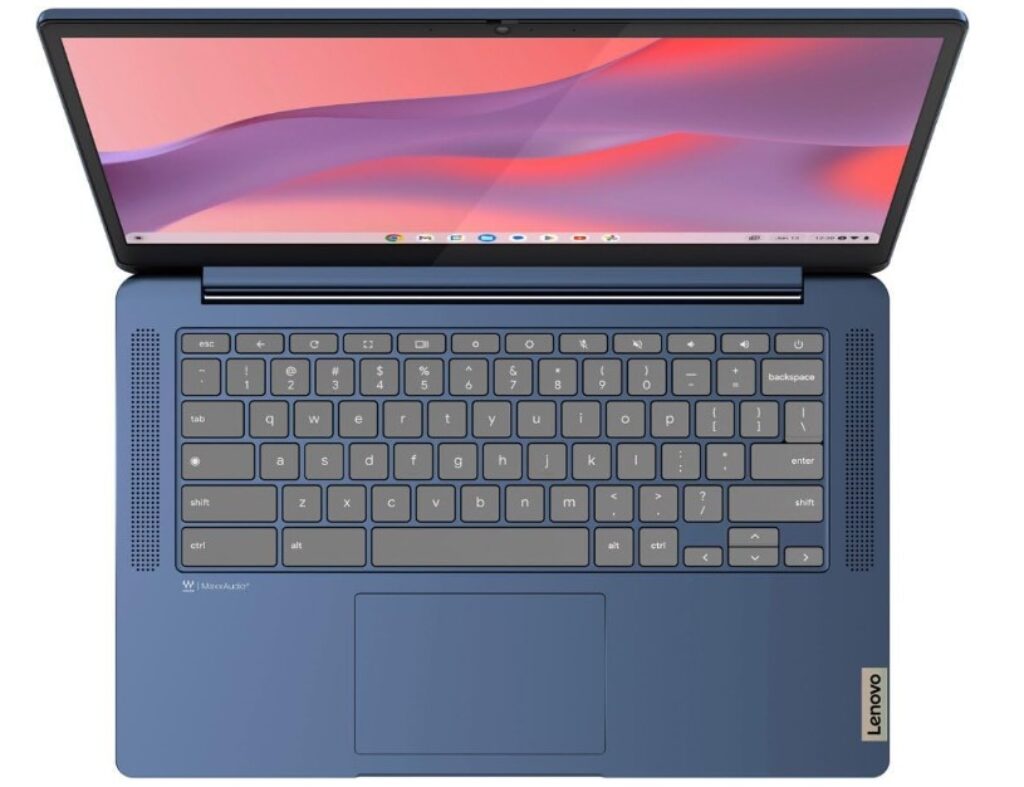
But don’t expect to be blown away. This isn’t a high-resolution display with vibrant colors and deep blacks. It’s a functional screen that gets the job done, nothing more, nothing less.
ChromeOS: The Simplicity You Love… or Loathe
ChromeOS is a double-edged sword. If you’re already deeply invested in the Google ecosystem and primarily use web-based applications, you’ll feel right at home. It’s fast, secure, and easy to use.
But if you rely on desktop applications or need more flexibility, ChromeOS can feel limiting. There’s no way to install traditional Windows or macOS apps, and you’re pretty much stuck with what Google offers.
The Verdict: A Chromebook for the Budget-Minded Minimalist
The Lenovo IdeaPad Slim 3 Chrome is a bare-bones laptop that gets the job done for basic tasks. It’s affordable, lightweight, and easy to use. But it’s not a powerhouse, and it’s not for everyone.
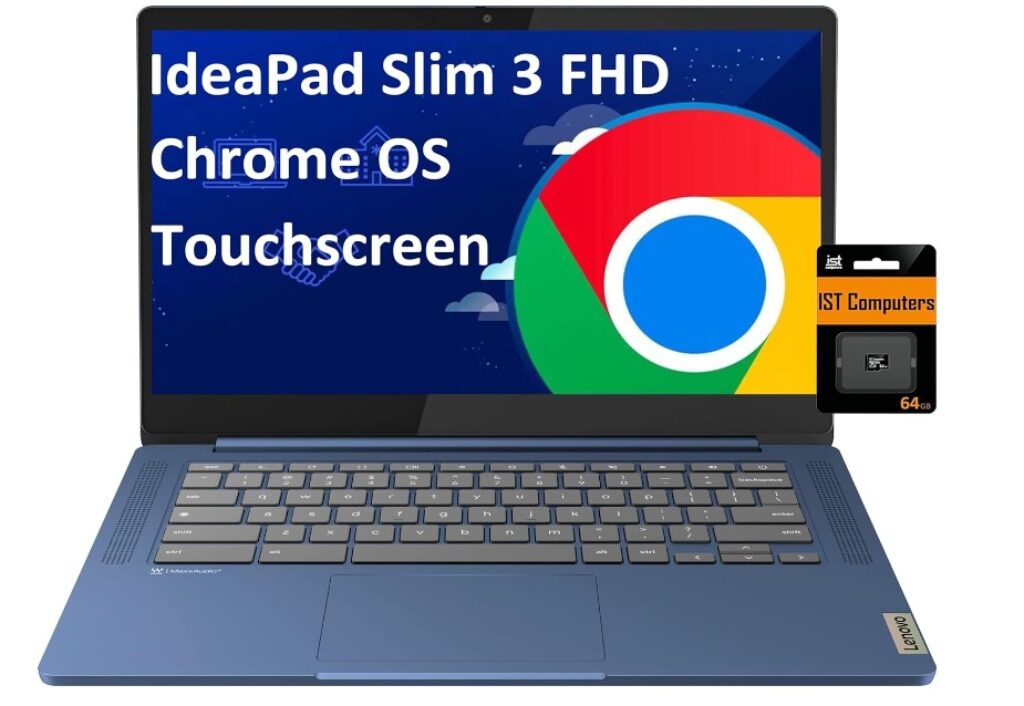
If you’re a light user who primarily uses web-based applications and doesn’t need a lot of storage or processing power, the IdeaPad Slim 3 Chrome might be a good fit. But if you need a more powerful machine or want more flexibility, you’ll need to look elsewhere.
Lenovo, you’ve created a decent Chromebook, but it’s not for everyone. It’s a niche product for a specific audience, and it’s up to you to decide if you’re part of that niche.
MICROSOFT SURFACE PRO 8: A WORK-FROM-HOME POWERHOUSE.
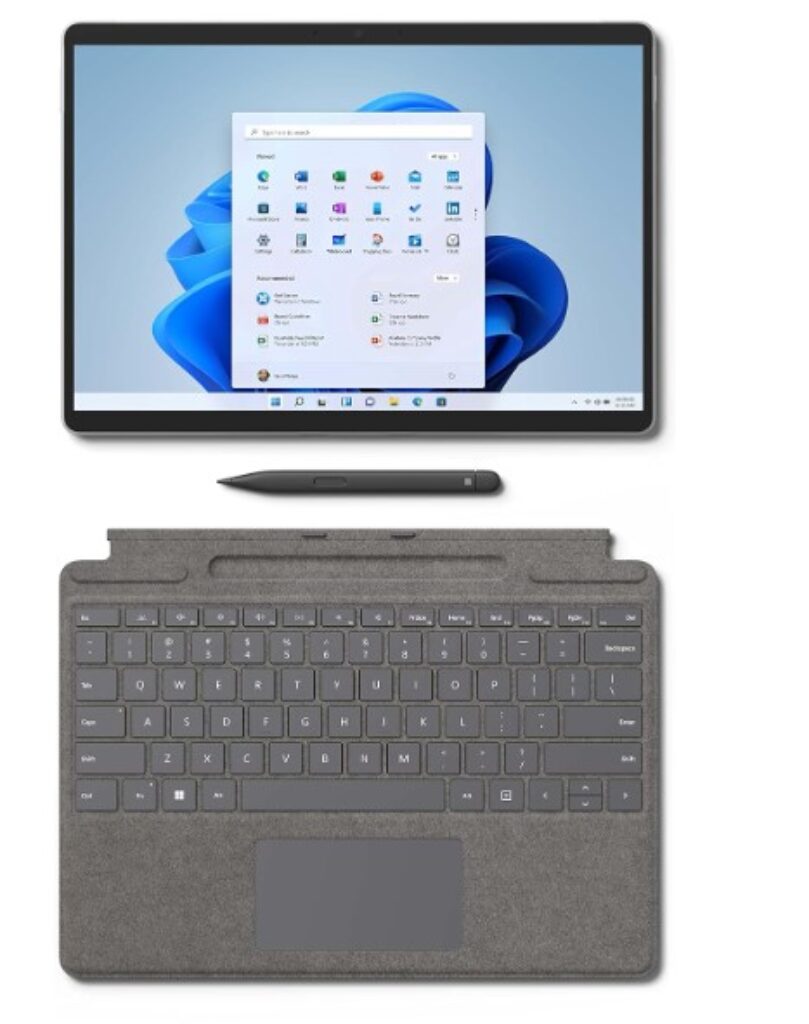
Microsoft’s Surface Pro 8: the sleek, platinum-clad tablet that yearns to be your ultimate work-from-home companion. It’s got the looks, the power, and the versatility. But does it justify the hefty price tag?
Intel Evo Platform Core i7: A Beast Under the Hood… Maybe Too Much Beast?
The Intel Evo Platform Core i7 is overkill for most WFH tasks. This chip is designed to handle everything from video editing to coding marathons.
Sure, it’s nice to have that kind of power on tap, but for the average remote worker who spends their days in spreadsheets, emails, and video calls, it might be a bit like using a sledgehammer to crack a nut.
Don’t get me wrong, the Surface Pro 8 is blazing fast. But do you really need that much speed to scroll through Twitter or reply to emails?
13-inch PixelSense Flow Touchscreen: Gorgeous, But Where’s the Keyboard?
The 13-inch PixelSense Flow touchscreen is a sight to behold. It’s bright, vivid, and incredibly responsive.
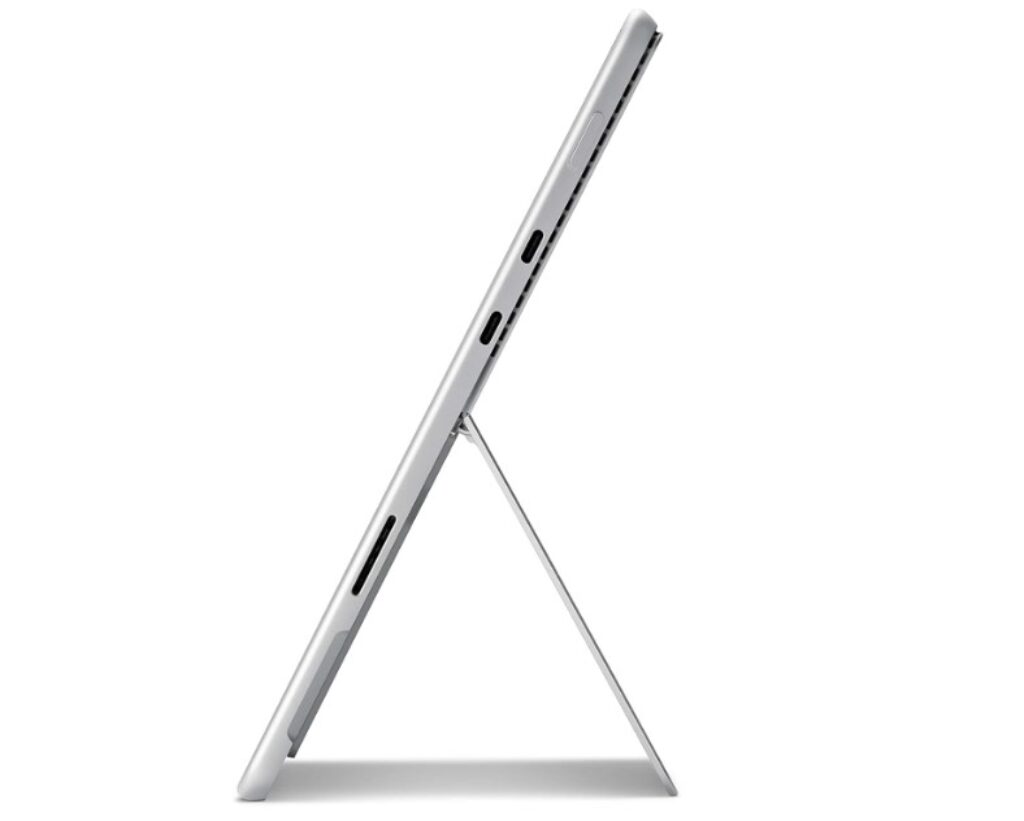
Whether you’re sketching out ideas, editing photos, or just browsing the web, this display is a joy to use.
However, the detachable keyboard, which is sold separately, is essential for a great typing experience and productivity, making it a great keyboard for long typing sessions.
But here’s the rub: the Surface Pro 8 is a tablet first and a laptop second.
The keyboard is sold separately, which is a major bummer for a device that’s marketed as a productivity powerhouse. And while the touchscreen is great for tablet mode, it’s not ideal for long typing sessions.
32GB Memory and 1TB SSD: Future-Proof… But at What Cost?
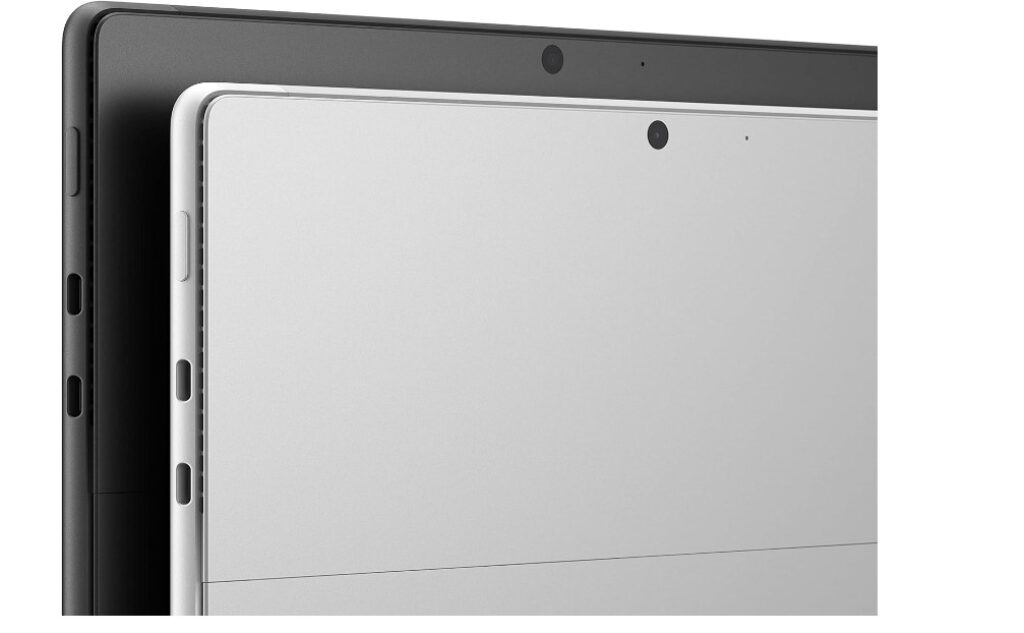
Microsoft finally gets it: more RAM and storage are always better. With 32GB of memory and a 1TB SSD, you’ll have plenty of headroom for multitasking and storing all your work files.
This configuration is practically future-proof, ensuring that the Surface Pro 8 will remain relevant for years to come.
But all this power and storage comes at a price. The Surface Pro 8 is not cheap. In fact, it’s one of the most expensive tablets on the market. Is the premium worth it for the average WFH user? That’s a question only you can answer.
A Premium Tablet with Laptop Aspirations
The Surface Pro 8 is a high-performance machine that can be a capable work-from-home device, but with some caveats. It’s thin and light, and the long battery life makes it ideal for remote workers who are constantly on the go.
The powerful processor and ample storage ensure smooth multitasking and the ability to handle demanding applications.
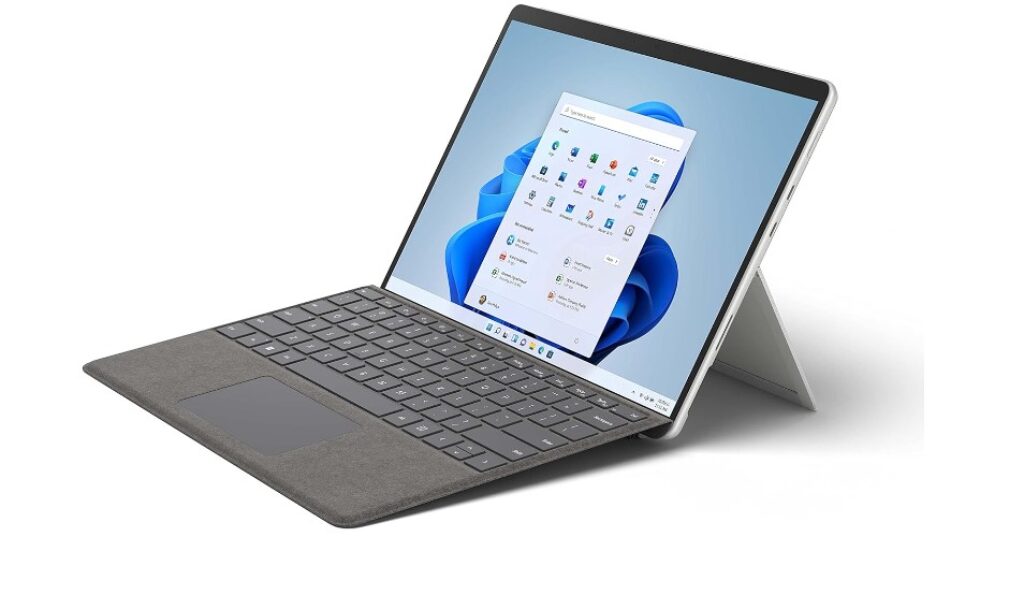
However, the detachable keyboard is an essential accessory that adds significant cost to the overall package. Additionally, the touchscreen, while beautiful, is not the most ergonomic option for extended typing sessions.
Microsoft, you’ve created a beautiful and powerful tablet, but it’s not the perfect WFH solution. It’s a niche product for a specific audience, and it’s up to you to decide if you’re part of that niche.
THE DEFINITIVE WORK-FROM-HOME LAPTOP BUYER’S GUIDE: DITCH THE DESK, NOT YOUR SANITY
Working from home is the new normal, but don’t let that fool you into thinking any old clunker of a laptop will do. If your current machine is chugging along slower than a dial-up modem, it’s time for an upgrade.
CPU: THE BRAINS BEHIND YOUR PRODUCTIVITY (CHOOSE WISELY)
Your laptop’s CPU is its beating heart, the engine that drives everything you do. For a smooth and productive WFH experience, you’ll need a processor that can handle multitasking, video conferencing, and resource-intensive applications with impressive performance.
- Intel Core i5 or i7: These processors offer a great balance of performance and power efficiency.
- AMD Ryzen 5 or 7: AMD’s Ryzen chips are known for their multi-core performance, making them ideal for multitasking and content creation.
- Apple M1 or M2: Apple’s custom silicon chips offer incredible performance and battery life, but they’re only available on MacBooks.
RAM: THE MORE, THE MERRIER (SERIOUSLY, DON’T SKIMP)
RAM is your laptop’s short-term memory. The more you have, the more applications and browser tabs you can open simultaneously without experiencing slowdowns or crashes.
For a smooth WFH experience, aim for at least 8GB of RAM. But if you’re a power user or plan on multitasking heavily, 16GB or even 32GB is a better bet.
STORAGE: SSD (SOLID STATE DRIVE) OR BUST (NO HARD DRIVE EXCUSES)
SSDs are faster, quieter, and more reliable than traditional hard disk drives (HDDs). They’ll make your laptop boot up faster, applications load quicker, and overall performance will be snappier.
Opt for at least 256GB of SSD storage, but consider 512GB or 1TB if you store a lot of files locally to ensure you have ample storage space.
DISPLAY: SIZE AND RESOLUTION MATTER (FOR YOUR EYESIGHT AND SANITY)
Staring at a small, low-resolution display all day is a recipe for eye strain and headaches.
For a comfortable WFH experience, choose a laptop with a display that’s at least 14 inches and has a resolution of 1920×1080 (Full HD) or higher.
If you’re a creative professional or someone who demands the best visuals, consider a 4K display.
BATTERY LIFE: UNPLUG AND UNLEASH (YOUR INNER NOMAD)
Working from home doesn’t mean you’re always tied to your desk.
A laptop with long battery life gives you the freedom to work from the couch, the coffee shop, or even the park (if you’re lucky enough to have good Wi-Fi).
Aim for at least 8 hours of battery life on a single charge.
OTHER CONSIDERATIONS: THE LITTLE THINGS THAT MAKE A BIG DIFFERENCE
Webcam and Microphone: Essential for video calls and virtual meetings. Look for a laptop with a high-resolution webcam and a noise-canceling microphone for clear communication. Additionally, a sleek design can enhance your work environment and provide a professional appearance during video calls.
Keyboard and Touchpad: You’ll be spending a lot of time typing and navigating, so make sure the keyboard and touchpad are comfortable and responsive.
Ports: Ensure your laptop has the ports you need for connecting peripherals like external monitors, keyboards, and mice.
Weight and Portability: If you plan on working from different locations, choose a laptop that’s lightweight and easy to carry around.
The Verdict: Find Your Perfect WFH Companion
Choosing the best work-from-home laptop is a personal decision. It depends on your individual needs, budget, and preferences.
But by considering the factors outlined in this guide, you’ll be well on your way to finding a machine that will boost your productivity, enhance your comfort, and make working from home a joy.
Remember, a good WFH laptop is an investment in yourself and your career. So don’t settle for anything less than the best
FAQs
Which generation laptop is best for work from home?
It’s not about the generation of the laptop, but the components inside that truly matter. H
What laptop brand is best for working from home?
Apple: MacBooks are known for their sleek design, powerful performance, and seamless integration with other Apple devices. However, they come with a premium price tag.
Dell: The XPS line offers a great balance of performance, portability, and value.
HP: The Spectre and Envy lines are known for their premium design and features, while the Pavilion line offers more budget-friendly options.
Lenovo: The ThinkPad series is a favorite among business professionals for its durability, security features, and comfortable keyboards.
What specs do I need for a work from home laptop?
The ideal specs for a WFH laptop will vary depending on your specific needs. However, here’s a good starting point:
Processor: 11th Gen Intel Core i5 or AMD Ryzen 5 (or newer)
Memory: 16GB RAM (or more for demanding tasks)
Storage: 512GB SSD (or 1TB for ample space)
Display: 14-inch or larger, Full HD (1920×1080) resolution or higher
Battery Life: At least 8 hours on a single charge
Other Considerations: Webcam, microphone, keyboard comfort, port selection, and weight/portability.


